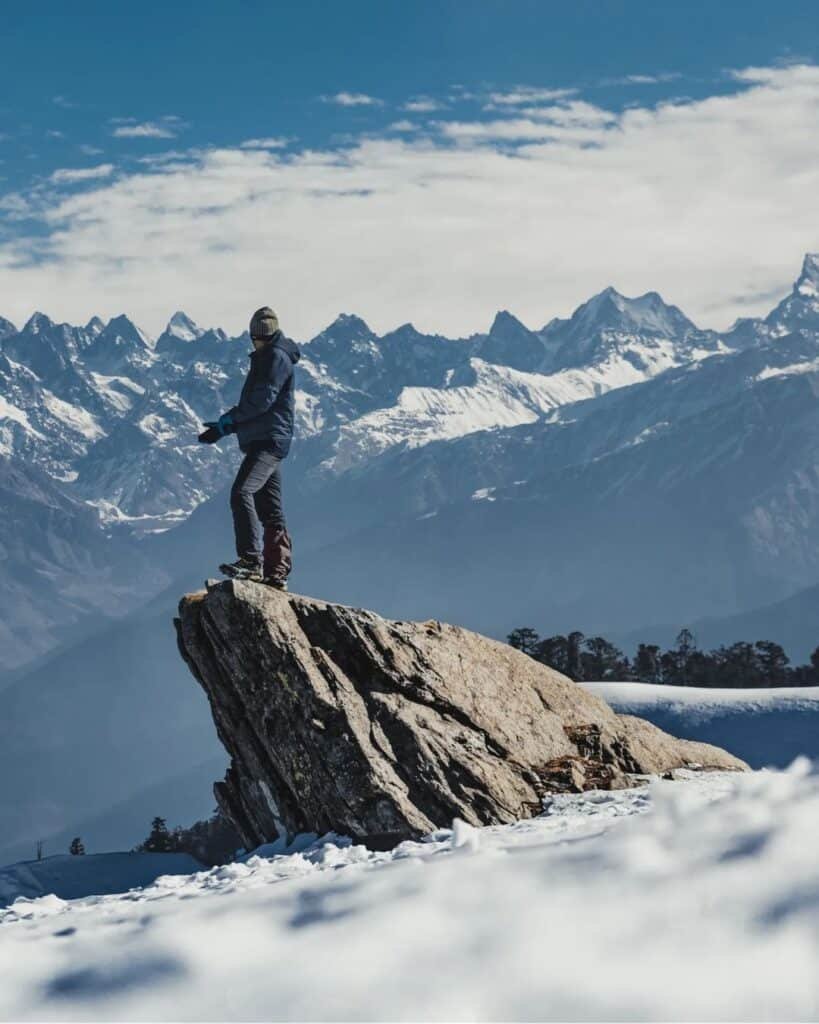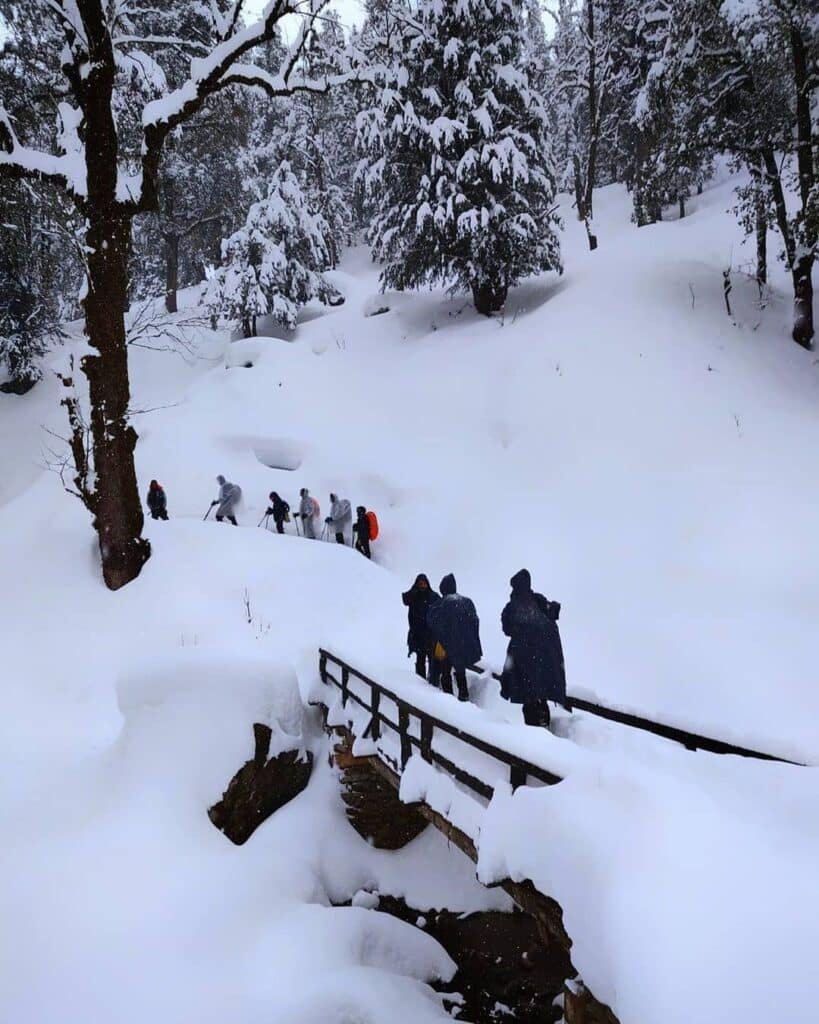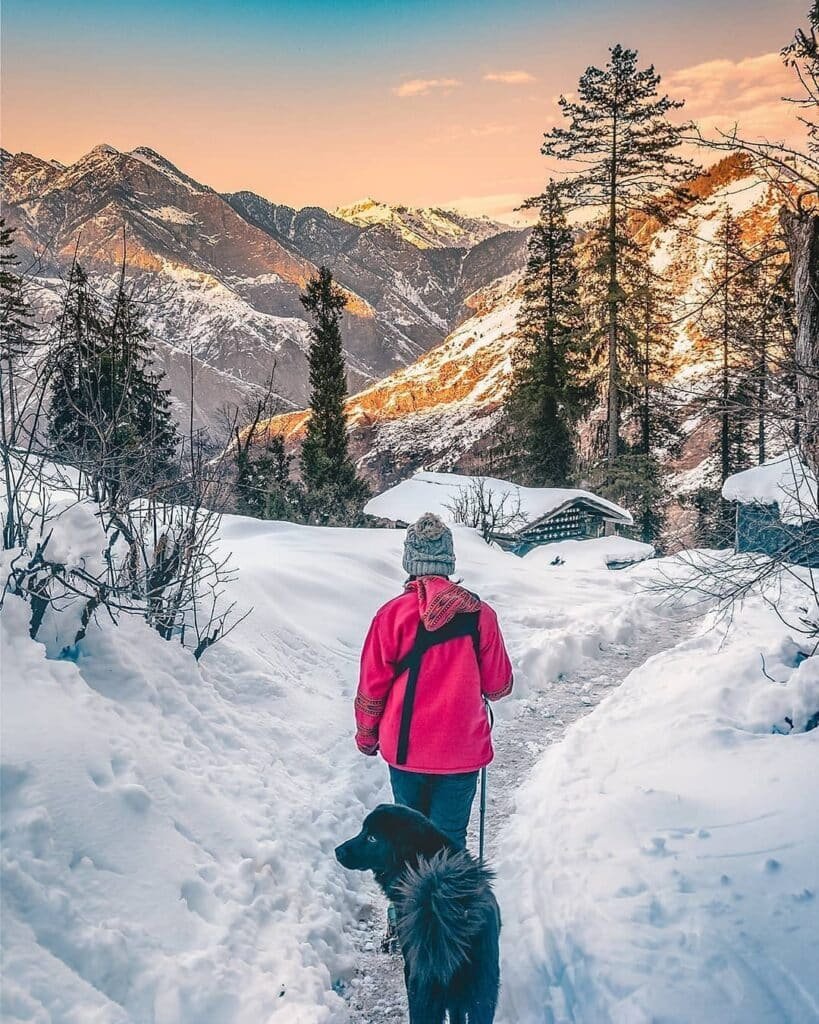Kedarkantha Trek: Complete Guide 2024
- Trekking Destinations
-
Aug 10
- Share post
Welcome to an enchanting journey through the heart of the Himalayas – the Kedarkantha trek awaits, offering an unparalleled blend of natural beauty, adventure, and cultural immersion. Imagine traversing through snow-laden trails, ascending to a stunning summit, and camping under starlit skies. Our comprehensive trek guide is your compass to this captivating escapade, providing you with a detailed itinerary, insights into the trail’s highlights, and practical tips to ensure a successful and rewarding experience.
From the exhilarating ascent to the Kedarkantha summit to the heartwarming interactions with local communities, join us as we unravel the secrets of this Himalayan gem. Whether you’re a seasoned trekker or embarking on your first mountain adventure, this guide will equip you with the knowledge and inspiration needed to make your Kedarkantha trek an unforgettable tale of exploration and achievement. Get ready to lace up your boots and embark on a lifetime journey!
- Max Altitude: 12,500 Ft. (3,810M)
- Average Trekking Fees: ₹7,000 - ₹10,000
- Distance: 20 – 25 kms
- Difficulty: Difficult
- Duration: 4-6 days
- Ideal For: Beginners
- Best Season: November to March
- Region: Uttarakhand
Table of Contents
ToggleOverview of the Kedarkantha Trek

The Kedarkantha trek is a captivating Himalayan expedition renowned for its stunning landscapes and thrilling adventure. Nestled in the Garhwal region of Uttarakhand, India, this trek perfectly blends natural beauty and challenging terrain. The hike usually spans 4-6 days and begins from Sankri village, known for its rustic charm and warm hospitality.
Key highlights of the trek include the breathtaking summit views, where trekkers are greeted by a panorama of majestic peaks like Swargarohini, Bandarpoonch, and Black Peak. The trail takes you through dense pine forests, lush meadows, and charming local villages, providing a glimpse into the region’s rich culture and traditions. Snowfall transforms the landscape into a winter wonderland during the colder months, adding a magical touch to the journey.
Camping is an integral part of the Kedarkantha experience, with campsites at Juda-Ka-Talab and Kedarkantha base offering a chance to revel in the beauty of the starlit Himalayan skies. The summit day involves a challenging ascent through snow-covered trails, culminating in a sense of accomplishment upon reaching the 12,500 feet summit.
Essential tips for trekkers include proper acclimatization, adequate clothing, and physical fitness. The best time to embark on this trek is from December to April when the trail is adorned with a blanket of snow. Whether you’re an avid trekker or a first-time adventurer, the Kedarkantha trek promises an unforgettable experience, making it a must-visit destination for those seeking a rendezvous with the Himalayan wilderness.
Trek Duration & Difficulty

The Kedarkantha trek presents an engaging 4-6 day expedition spanning approximately 20-25 kilometres. The trekking duration each day varies from 4 to 5 hours, traversing diverse terrains and altitudes.
Key Highlights:
- Trek Duration: 4-6 days
- Total Distance: 20-25 kilometres
- Daily Trekking: 5-7 hours
With a difficulty level classified as easy-moderate, the trail encompasses steep ascents, particularly on the summit day, which involves navigating snow-covered trails to reach the 12,500 feet high summit. Adequate physical fitness is imperative due to the demanding landscape and extended trekking hours. Proper pre-trek preparation, including cardiovascular conditioning and strength training, is recommended to ensure a successful journey.
Key Points:
- Easy to Moderate trekking level
- Challenging ascent to the 12,500 feet high summit
- Snow-covered paths and varied terrains
- An essential requirement of physical fitness and pre-trek preparation
The Kedarkantha trek offers a remarkable opportunity to engage with the stunning Himalayan surroundings, accompanied by the thrill of conquering its demanding trails.
Best Season for the Kedarkantha Trek

The best season to embark on the Kedarkantha trek is winter, stretching from November to March. This time of year brings a unique charm to the hike, with its highlights, advantages, and disadvantages.
Highlights of the Winter Season:
- Snow-Covered Wonderland: The trail is blanketed in pristine snow, creating a picturesque winter wonderland.
- Breathtaking Scenery: Crisp, clear skies offer stunning views of the surrounding snow-capped peaks.
- Magical Campsites: Camping beside frozen lakes and under starlit skies adds to the enchantment.
Pros of Winter Trekking:
- Serene Atmosphere: Fewer trekkers mean a quieter and more peaceful natural experience.
- Exceptional Photography: The snow-laden landscapes provide excellent opportunities for captivating photographs.
- Unique Adventure: Walking through snow and conquering snowy trails offers a novel and exciting challenge.
Cons of Winter Trekking:
- Cold Temperatures: The weather can be freezing, requiring proper clothing and gear.
- Limited Accessibility: Heavy snowfall might lead to occasional road closures, affecting travel plans.
Average Temperature:
- November: Daytime: 8°C (46°F), Nighttime: -5°C (23°F)
- December: Daytime: 2°C (36°F), Nighttime: -8°C (18°F)
- January: Daytime: 1°C (34°F), Nighttime: -10°C (14°F)
- February: Daytime: 3°C (37°F), Nighttime: -8°C (18°F)
- March: Daytime: 6°C (43°F), Nighttime: -3°C (27°F)
Key Points:
- Best season: Winter (November to March)
- Snow-covered landscapes and majestic views
- Pros: Serene atmosphere, unique adventure, and exceptional photography
- Cons: Cold temperatures and limited accessibility due to snow
- Average temperatures range from -10°C to 8°C (14°F to 46°F)
Winter trekking in Kedarkantha unveils a world of beauty and challenges, making it an ideal choice for those seeking an unforgettable snowy escapade.
Budget & Costing

When planning your budget for the Kedarkantha trek, several essential factors must be considered to ensure a smooth and cost-effective journey.
- The average trekking fees for this adventure, charged by trekking organizations in India, typically range from ₹7,000 to ₹10,000. These fees cover essential components such as accommodation, food, and guides.
- Transportation to the trek’s starting point should be accounted for whether you opt for flights, trains, or buses.
- While accommodation costs are already included in the trekking fees, it’s advisable to inquire about any additional charges for lodging before and after the trek.
- For necessary equipment and gear, renting items like trekking poles, sleeping bags, and jackets can offer a cost-effective alternative to purchasing them outright.
- While food and water are typically provided during the trek, having extra snacks or accommodating personal dietary preferences might prompt you to bring supplementary items.
- Additionally, setting aside a tiny budget for miscellaneous expenses, such as local purchases or unexpected costs, is prudent to ensure you are prepared for unforeseen circumstances.
By considering these factors and creating a comprehensive budget, you can embark on the Kedarkantha trek with financial clarity, enabling you to enjoy this enriching Himalayan experience.
How To Reach

- Flights to Dehradun: The fastest option to reach Dehradun, the gateway to the Kedarkantha trek, is a flight from your city to Dehradun’s Jolly Grant Airport. Several airlines operate daily flights, offering convenience and reduced travel time. However, flight costs can vary depending on the time of booking and availability.
- Trains to Dehradun: Train travel is another viable choice. You can board a train from Delhi to Dehradun Railway Station. While the journey may take longer than a flight, it provides a more scenic experience and can be cost-effective. Be sure to check train schedules and book your tickets in advance.
- Buses to Dehradun: Buses also connect Delhi to Dehradun, providing a budget-friendly alternative. Various bus operators offer overnight services, allowing you to save on accommodation costs. The journey may take longer than a flight, but it provides a cost-effective mode of transportation.
- Trek Organization Pick-Up and Drop: Most trekking organizations arrange pick-up and drop services from Dehradun to the trek’s starting point in Sankri. This option provides convenience and ensures a seamless transition from arrival to the hike’s beginning.
- Best and Cheapest Option: Considering convenience and cost, the best and cheapest option may be to take a train to Dehradun. Trains offer affordability, a scenic journey, and the possibility to choose from various travel classes. Also, trekking organizations’ pick-up and drop services can simplify your travel logistics.
By selecting the most suitable transportation method based on your preferences and budget, you can ensure a smooth and enjoyable start to your Kedarkantha trekking adventure.
Highlights of the Kedarkantha Trek

The Kedarkantha trek is a mesmerizing expedition that promises an array of captivating highlights, making it a cherished Himalayan experience.
- Panoramic Summit Views: The ultimate highlight is reaching the 12,500 feet high Kedarkantha summit, rewarding trekkers with awe-inspiring vistas of renowned peaks, including Swargarohini, Bandarpoonch, and Black Peak. This breathtaking panorama stands as a testament to nature’s grandeur.
- Enchanting Winter Wonderland: Embark on this trek during winter to witness the trail transforming into a magical snow-covered wonderland. Every step takes you through a pristine landscape adorned in glistening white, creating an enchanting ambience.
- Picturesque Camping Sites: The trek offers remarkable camping opportunities at Juda-Ka-Talab and the Kedarkantha base, allowing you to relish the serenity of starlit nights amidst the Himalayas. These campsites create cherished memories of nature’s tranquillity.
- Charming Local Villages: The trail meanders through charming local villages like Sankri, providing a glimpse into the region’s rich culture and traditions. Engage with the warm-hearted locals, experience their way of life, and cherish the sense of community.
- Diverse Landscapes: As you ascend, encounter a diverse range of landscapes, from dense pine forests to vast, undulating meadows like Hargaon. Each step unveils a new facet of nature’s beauty.
- Thrilling Winter Adventure: The challenging terrain, especially during the winter months, adds an element of adventure and excitement. Traversing through snow-laden paths and conquering steep ascents creates a thrilling sense of accomplishment.
- Starlit Night Skies: Away from the city lights, the trek offers a chance to gaze upon a glittering expanse of stars, creating a breathtaking night sky that adds a touch of magic to your journey.
- Cultural Insights: Interact with the local Garhwali communities, learning about their daily lives, traditional practices, and heartwarming stories, which enrich the trekking experience.
- Personal Achievement: Scaling the Kedarkantha summit is a physical accomplishment and testament to your determination and spirit. The sense of achievement you gain as you stand atop the summit is a memory that will stay with you forever.
The Kedarkantha trek seamlessly weaves these highlights into a captivating journey. It is a cherished chapter in any trekker’s Himalayan adventures.
Kedarkantha Trek Itinerary

Day 1: Dehradun to Sankri (Travel)
- Travel: Depart from Dehradun to Sankri via road (around 8-10 hours).
- Highlight Scenic drives through charming villages and lush landscapes.
Day 2: Sankri to Juda-Ka-Talab
- Distance: Approximately 4-6 kilometres
- Time: About 4-5 hours
- Highlight trek through dense pine forests, crossing streams, and reaching Juda-Ka-Talab – a serene lake surrounded by tall trees.
Day 3: Juda-Ka-Talab to Kedarkantha Base
- Distance: Around 3-4 kilometres
- Time: Approximately 3-4 hours
- Highlight trek to the Kedarkantha base camp, passing through clearings and experiencing a gradual change in landscape.
Day 4: Kedarkantha Base to Kedarkantha Summit and back to Hargaon Camp
- Distance: About 6-7 kilometres (summit and back to Hargaon Camp)
- Time: 8-10 hours in total
- Highlight the Challenging ascent to the Kedarkantha summit (12,500 feet), offering breathtaking panoramic views. Descend to Hargaon Camp.
Day 5: Hargaon Camp to Sankri
- Distance: Approximately 4-5 kilometres
- Time: About 3-4 hours
- Highlight: Descend back to Sankri, passing through local villages and enjoying the last leg of the trek.
Day 6: Sankri to Dehradun (Travel)
- Travel: Return from Sankri to Dehradun (8-10 hours) via road.
- Highlight: Reflect on the incredible journey while driving through picturesque landscapes.
Key Landmarks and Highlights:
- Juda-Ka-Talab: Tranquil lake amidst the forest.
- Kedarkantha Base: Campsite surrounded by towering peaks.
- Kedarkantha Summit: Majestic views of Swargarohini, Bandarpoonch, and Black Peak.
- Hargaon Camp: Overnight stay with the beauty of the Himalayas.
- Local Villages: Cultural insights and interactions with Garhwali communities.
- Sankri: Charming village with rustic charm and gateway to the trek.
This detailed itinerary ensures you experience the best Kedarkantha trek while allowing time to acclimatize, relish the natural beauty, and conquer the summit. Trekking times may vary based on individual fitness levels and weather conditions.
Conclusion
As your footsteps echo the trails of the Kedarkantha trek, we hope this guide has illuminated your path and kindled a sense of wanderlust within you.
The majestic peaks, snow-covered landscapes, and the camaraderie of fellow trekkers await your embrace. Remember, the Kedarkantha trek is not just about conquering heights but about discovering your strength and forging lasting memories.
Whether you find solace in the whispering pine forests, stand humbled at the summit’s edge, or connect with the warmth of local culture, this journey is a testament to your spirit of adventure.
So, go forth with determination, let the Himalayas weave their magic, and may the memories you gather on these trails be etched in your heart forever. Your Kedarkantha story begins here – one step at a time.
FAQs
The Kedarkantha trek is classified as easy to moderate, with challenging terrains, steep ascents, and varying weather conditions. Adequate physical fitness and preparation are recommended.
The cost of the Kedarkantha trek varies based on factors such as trekking organization, duration, and inclusions. On average, trekking fees range from ₹7,000 to ₹10,000, covering accommodation, food, and guides. Additional costs may include travel to the start point and equipment rental.
The Kedarkantha trek typically spans 4-6 days, covering approximately 20-25 kilometres. Due to the trail’s length and altitude cannot be completed in just one day; proper acclimatization and multiple days of trekking are necessary for a safe and enjoyable experience.
The best time for the Kedarkantha trek is from November to March, during winter. This period offers stunning snow-covered landscapes, clear skies, and a chance to witness the region’s beauty at its peak.
Comments
Add a comment
Leave a Reply · Cancel reply
This site uses Akismet to reduce spam. Learn how your comment data is processed.
